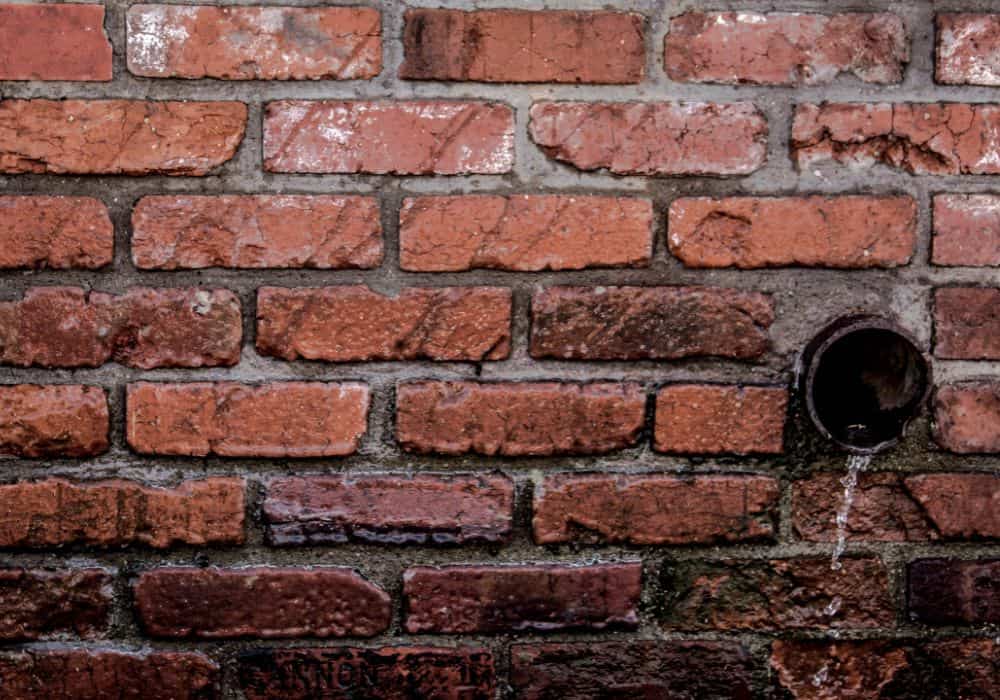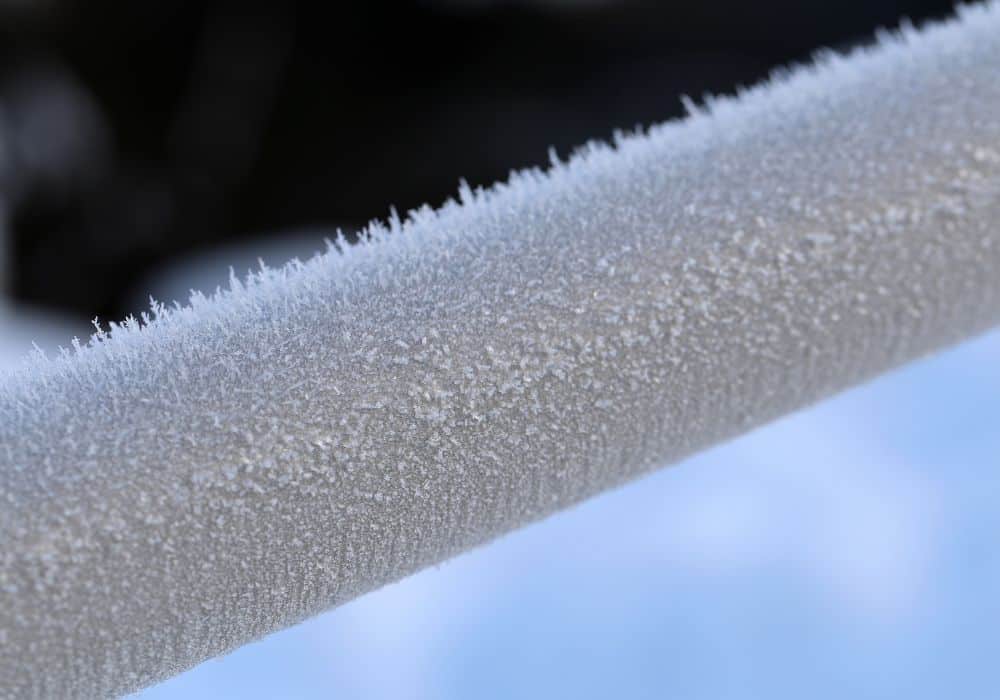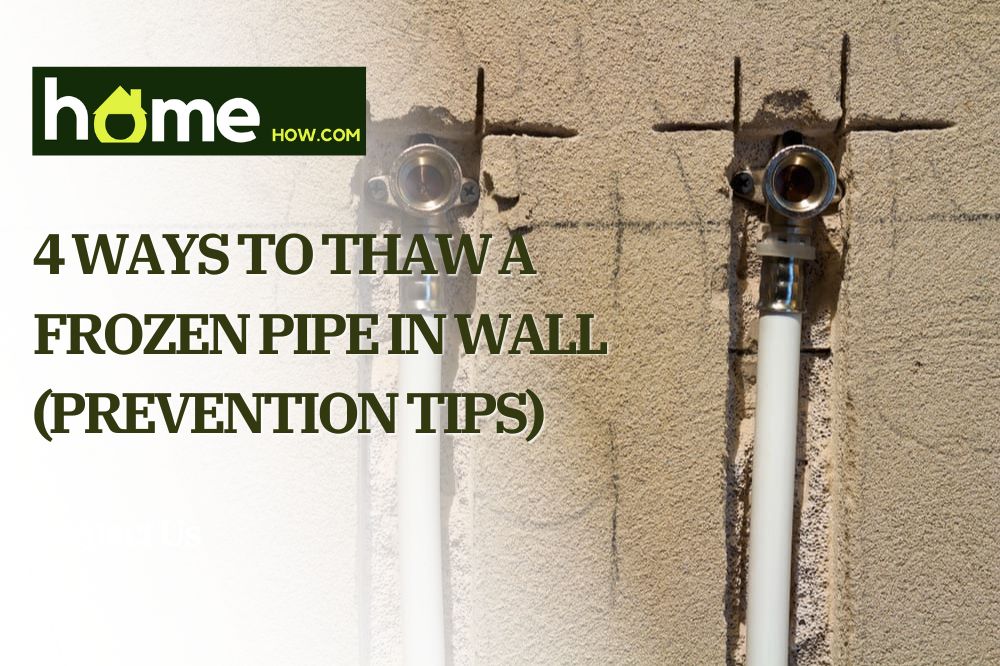If you find yourself with a frozen pipe that is inaccessible, don’t panic! There are several steps you can take to thaw the pipe and prevent further damage.
In this blog post, we will outline how to thaw a pipe in the wall, as well as provide tips for preventing pipes from freezing in the first place. Keep reading to learn more!
How To Tell If Your Pipes Are Frozen
If your pipes are located in an exterior wall, feel the wall – if it’s colder than the other walls, there’s a chance your pipes are frozen. Another tell-tale sign is if you turn on the water and only a small stream comes out or if no water comes out at all.
If this is the case, it’s likely that your pipes are frozen and will need to be thawed before water can flow through them again. Frozen pipes can lead to serious damage. Your pipes could develop leaks or even burst, causing your home to flood.
How To Thaw a Frozen Pipe in Wall

When the water in your drainpipe freezes, it expands and can lead to a burst pipe. This can lead to serious damage and flooding in your home. To prevent this from happening, it’s important to thaw your frozen drainpipe as soon as possible.
This is easier to do when your pipes are exposed, like under a sink, in closets, or in a basement. However, this can prove a bit more challenging if your pipes are not exposed. Luckily, there are a few things you can try yourself before you call a plumber.
1. Hot water
hot water is one option when you are trying to thaw a pipe that you don’t have access to. However, this will only work if you are still able to access running water. Try turning your faucet as hot as you can get it. Warm water may also work if that is all you can have. Once the ice has melted, open up your taps all the way to help flush out any remaining water and debris.
2. Warm your house
One way to thaw frozen pipes is to turn up the thermostat. This will cause the warm air from your furnace to circulate around the pipes, gradually warming them up. However, this method can take some time, and it may not be practical if only a few pipes are frozen.
In that case, you can use space heaters to target specific areas. Be sure to place the heater far enough away from the pipes so that they don’t get too hot and risk damaging the plumbing. With a little patience and care, you should be able to thaw out your frozen pipes safely.
3. Heat the source

One way to thaw a frozen water pipe is to use an infrared lamp. First, find the frozen section of the pipe. It will likely be along an exterior wall. Once you have located the frozen pipe, position the infrared lamp so that the beam of heat is directed at the wall in front of the pipe.
Be sure to keep the infrared lamp at least a few feet away from the wall, as well as any flammable materials, such as curtains or towels. Turn on the lamp and allow it to run for several hours, or until the frozen pipe has thawed.
You may need to move the lamp around during this time to ensure that the entire frozen section is heated evenly. Once the pipe has thawed, turn off the lamp and allow the water to flow freely again.
If you don’t have an infrared lamp, you can also use a regular heat lamp to thaw the frozen pipe. Simply place the heat lamp so that its bulb is close to (but not touching) the frozen pipe and turn it on.
As with the infrared lamp, be sure to keep flammable materials well away from the heat source. Allow the heat lamp to run until the frozen pipe has thawed, then turn it off and let the water flow again.
4. Open up your wall
If none of the other options are working, you may need to take a more drastic measure, like cutting your wall so you can access the frozen pipe.
This can be costly, but it is actually the safest way to thaw a frozen pipe. If you are willing to do this from the start, it is the most recommended option.
After you have access to the frozen pipe, use a hairdryer or heating pad on the frozen section of the pipe. You can also wrap the frozen pipe in towels that have been soaked in hot water. As the ice begins to melt, water will start flowing through the pipe.
Once the water is running freely, remove the hairdryer or heating pad and repair the hole in the wall.
Alternatively, you can use electrical heating tape. This type of tape is designed to generate heat, and it can be wrapped around a frozen pipe to gradually raise the temperature. It’s important to use caution when using electrical heating tape, as it can get very hot.
Wrapping it too tightly around a pipe could damage the pipe, and touching it with bare skin could result in burns. Once the tape has been applied, wait for the ice to melt and the water to start flowing again. If the water doesn’t flow after a few minutes, remove the tape and try another method.
How To Prevent Frozen Pipes

Prevention is the best course of action when it comes to your pipes in cold temperatures. Stay up to date on the weather and take the proper precautions when the temperature starts to drop below freezing.
By taking these simple precautions, you can help prevent your pipes from freezing and save yourself the hassle of dealing with a plumbing disaster.
1. Keep your heat on
One of the best ways to prevent frozen pipes is to keep your heat turned up during freezing temperatures. This may seem like an obvious solution, but many people make the mistake of turning their heat down or even off when they leave their homes for extended periods of time.
But even if you’re just leaving for the weekend, it’s important to keep your home warm enough to prevent your pipes from freezing. Set your thermostat to at least 55 degrees Fahrenheit, and if you’re going to be gone for more than a few days, consider asking a neighbor or friend to check on your home and make sure the heat is still on.
2. Keep your cabinet doors open
One way to prevent pipes from freezing is by keeping cabinet doors open. This allows warmer air to circulate around the pipes and can help to prevent them from becoming too cold.
Another way to prevent pipes from freezing is by adding insulation to them with foam or other materials. This can help to create a barrier between the cold air and the pipes, keeping them at a more consistent temperature.
In addition, it is important to seal any cracks or openings where cold air can enter.
It is also recommended to insulate the areas around the pipes as well, especially unheated areas like attics or crawl spaces.
3. Keep the water running
You should also let a trickle of water drip from your faucets during cold snaps. This may seem like a waste of water, but the flowing water will help to prevent the pipes from freezing.
In addition, you should disconnect and drain any garden hoses before the cold weather arrives. Water left in a hose can freeze and expand, causing cracking or bursting.
Conclusion
If you can’t access your pipes and none of these options work, it is ultimately best to call a professional plumber to come to take a look before further damage is done.
If you have a frozen pipe, never try to thaw it by using an open flame such as a blow torch, propane heater, or candle. This is extremely dangerous and can lead to a house fire.
If you found this article helpful, please let us know in the comments. We love to hear from our readers.
